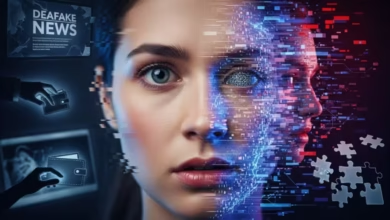Exploring AI and Society: The Rise of Generative AI in 2025

In 2025, the buzz around artificial intelligence has reached a new level, and one phrase dominates the headlines: generative AI. Whether it’s creating artwork, drafting an essay, or designing social media visuals, this technology has moved from niche experiments to everyday use. Search data backs it up—Google Trends shows “generative AI” consistently climbing in popularity.
People want to know how it works, why it matters, and what it means for the future. Students are typing in queries like “AI tools for writing essays,” while business owners are asking how generative engine optimization (GEO) can improve visibility. The short answer? Generative AI is no longer optional—it’s becoming part of how society functions. Let’s break down why this tech is on everyone’s mind, how it’s shaping daily life, and where it’s headed next.
What Is Generative AI and Why Is It So Popular?
At its core, generative AI is about creation. These systems analyze massive datasets and then generate fresh content—text, images, music, even video—that feels original. Tools like ChatGPT, DALL·E, and Midjourney brought this power to everyday users. No coding degree required.
Searches tell the story: interest in “AI content creation” and “free AI image generators” has spiked, with ChatGPT-related queries jumping more than 60% this year. Why the surge? Simple. It’s useful, creative, and sometimes jaw-dropping.
People rely on it for practical things—writing emails, polishing blog posts, or designing Instagram stories. Students are testing “AI writing tools for essays,” while marketers look into GEO to boost AI-driven search results. The easy access of free or affordable tools has lowered barriers, democratizing creativity in a way that feels revolutionary.
Why Generative AI Is Everywhere Right Now
- Easy to Access: Free tools like Google Bard and Character.AI open the door to anyone.
- Highly Versatile: It creates everything from text to video.
- Saves Time: Tasks that once took hours can be done in minutes.
- Cultural Impact: Viral TikTok and Instagram trends amplify its reach.
How Generative AI Shapes Everyday Life
Generative AI isn’t just a tech headline—it’s woven into real life. Education, entertainment, and business are all feeling the shift.
A Double-Edged Tool
Students are using AI for everything from math problems to study plans. Platforms like AI Bharat already have over two million learners enrolled, proving how eager people are to understand this technology.
But there’s tension. Parents and teachers worry about shortcuts. Search spikes for “AI essay detector” show the concern is real. Schools are adopting detection tools to keep integrity intact while still embracing innovation. It’s the classic story: technology races ahead, and rules scramble to keep up.
Redefining Art and Content
Musicians, designers, and influencers are experimenting with AI tools daily. Searches for “AI image generator free” or “AI photo editor without watermark” have exploded. Platforms like Midjourney make professional-level visuals accessible to casual creators.
Take the gaming community. The “DND image generator” trend took off in 2025, letting players design custom fantasy characters without an artist. That’s exciting—but it also raises questions. Will AI replace human creativity? Or will it become just another brush in the artist’s toolkit?
The GEO Shift
Companies are racing to adapt. Generative engine optimization (GEO) is now a common strategy—over 65% of businesses use it to ensure their content is discoverable by AI-driven platforms like ChatGPT or Gemini.
At the same time, interest in “AI-powered analytics” and “real-time insights” is climbing. Businesses are automating product descriptions, tailoring ads, and creating personalized content in ways that felt impossible five years ago. Google Cloud’s 2025 AI report even notes how multimodal AI—text, video, and images combined—is reshaping customer interaction.
The Shadow Side of Generative AI
With all this progress, ethical concerns are impossible to ignore. Search trends reveal society’s biggest worries.
Privacy and Fake Content
Queries like “AI deepfake detector” and “remove AI from photos” show rising anxiety. AI-generated images and voices can blur the line between real and fake, and that’s dangerous in news and politics. Governments and global organizations are stepping in: the UN formed a council to regulate AI superintelligence, while tech firms push detection tools to fight misinformation.
Job Security and Automation
People are worried about work. Searches such as “best side hustles 2025” and “AI-driven jobs” prove the fear is widespread. Generative AI makes coding easier, helps marketers brainstorm, and even answers customer questions—but it also automates repetitive roles. Analysts predict a rise in “augmented working,” where AI supports rather than replaces humans. Still, the anxiety is real.
Responsible AI Development
Transparency, fairness, and inclusivity are top priorities. Rising searches for “AI ethics” and “AI regulation bill” reflect the public demand for accountable development. Companies face pressure to reduce bias in algorithms, secure user data, and keep access fair.
The Future of Generative AI in Society
Where do we go from here? Trends point toward three major shifts.
- Smaller Models, Bigger Impact: Instead of giant systems, leaner and faster small language models are gaining traction. Think efficiency without the massive cost.
- Multimodal AI: The ability to process text, images, and video at once is expected to transform industries like healthcare and education.
- AI Companions: Searches for “AI girlfriend apps” might sound quirky, but they highlight a serious trend. People are turning to AI for companionship, raising new questions about mental health and relationships.
Getting Started with Generative AI
Curious about where to begin? Here are the top free tools in 2025:
| Tool | Best Use | Key Features | Link |
| ChatGPT | Text generation | Essays, brainstorming | OpenAI |
| Midjourney | Image creation | Stunning visuals, watermark-free | Midjourney |
| Google Bard | Productivity | Google Workspace integration | Google Bard |
| Character.AI | Conversations | Custom AI companions | Character.AI |
Tips for Responsible Use:
- Double-check AI outputs before sharing.
- Don’t give sensitive personal data to AI platforms.
- Take beginner courses on AI basics—many are free.
- Use AI to enhance your work, not replace your creativity.
Embracing the Shift
Generative AI is not just another passing trend—it’s a cultural force in 2025. It’s reshaping how we study, create, and do business. Students lean on it for assignments, marketers leverage it for GEO, and creatives experiment with new forms of expression.
But as powerful as it is, generative AI also forces us to ask tough questions. How do we fight misinformation? What happens to jobs? Can we make AI development ethical and fair?
Handled wisely, this technology can make life richer, more creative, and more efficient. The real challenge isn’t what AI can do—it’s how we decide to use it. Maybe your next step is testing an AI art tool, or perhaps exploring GEO for your business. Either way, 2025 is the year to experiment. The future of AI and society is being written right now, and we all have a part in shaping it.
For similar articles, please visit: AI and Society
Homepage / humanaifuture.com




